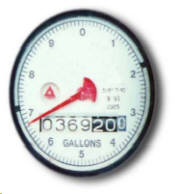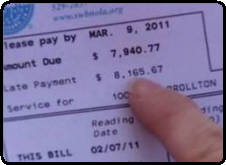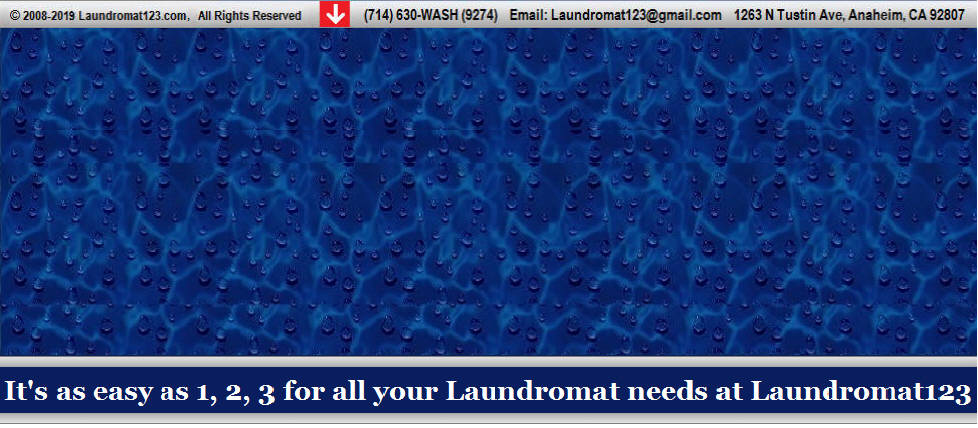WATER BILL ANALYSIS
The most common pre-purchase analysis used by industry professionals and the first time buyer is an analysis of the water bills and records. The concept is simple: the owner of the Laundromat is not watering his rose bushes with the water he purchases but is using it to fill up the washing machines in his store. If you know how much water the owner of Laundromat buys you know how many washers he could fill up with that much water. Multiply the price he sells the wash (say $1.25 per washing machine start for top load washers) times the number of washers he could fill and you get a pretty good idea of the amount of wash income that amount of water could generate.
SHORTCOMINGS OF WATER BILL ANALYSIS
Some waters meters are inaccurate, some washers vary in their use (pressure filled vs. time filled washers), settings can be adjusted to reduce water use on the washers, the factory data on water consumption is off, there are undetected water leaks on the property, your meter is connected to other tenants water pipes (you're paying their water bills), estimation of bills by water companies (common), the use by customers of the various types of front load washers and top load washers is unknown and some owners knowing their water bills will be scrutinized will leave a water tap in the back room running for a few months prior to sale.
CALCULATION OF WATER USE
How do you calculate the water use. Most water companies sell the water in Hundred Cubic
Feet units. A cubic foot of water has 7.48 gallons per cubic foot or 748 gallons per HCF
(Hundred Cubic Feet). Other water companies will give you the actual gallons used at the
Laundromat. If the bill is in HCF multiply the number of HCF times 748 and you get the total
number of gallons. Divide the total number of gallons by thedays in the billing period and you
have the daily water use of the Laundromat. Multiply by 30 and you have the average
monthly use of water by the Laundromat. Divide the total monthly water use by the amount
of water your brand of washer will use (find the page in this web site showing water use by
brand) and divide that number into the gallons of water purchased per month. Multiply the
number of washing machine starts per month times the vended price of the washer and you
have the income from the washers in the Laundromat.
DIVINING THE DRYER USE
Determining the income from dryers is more art than science. No one has promoted an analysis programs of gas bills that will accurately predict income. Since about one-half of a gas bill goes to heating hot water it is very difficult to get reliable dryer income numbers no matter how long and hard you crunch them. The art comes into play by considering the minutes sold per vend price, the minutes provided of cool down (no gas is used), the age of the dryer (dryer efficiency) and the habits of the customers. A very general rule of thumb is that dryer income is from 35% to 50% of washer income.
GUESSING AT VENDING INCOME
Again no one has a proven analysis program to prove vending income. A rule of thumb is that you can multiply the amount of vended product purchased (for example $500 of soda, soap and candy purchases by the Laundromat owner per month) times two equals the vending income ($1,000). A second rule of thumb calculates the vended income as 10% of the washer and dryer income total, but this is varied depending if the Laundromat has a soap machine, bag machine, water machine, pay toilet lock, candy machine, soda machine, video games, gumballs, phone cards, stickers or no vending at all.
CONCLUSION
Try to use at least one to three years of water bills so you can determine the monthly average of water
use for a one year period. Laundromat income should be based on the yearly average income, not the
selection of only the performance in the best month. It is advisable that you use a water bill or utility bill
analysis as only one tool in the total process of examination of the books and records of a Laundromat.
The utility bills can be useful to exclude certain locations but cannot and should not be relied upon as the
definitive method of income verification. Finding a "good" Laundromat requires a lot of thought and work
including reviewing utility bills, lease terms, equipment condition, demographics, competition, tax forms
[many owners will not share these], potential new stores, reasons for selling and a host of other issues.
Do you think you should use a little professional help in your verification process?


HOW TO DO A WATER BILL ANALYSIS




